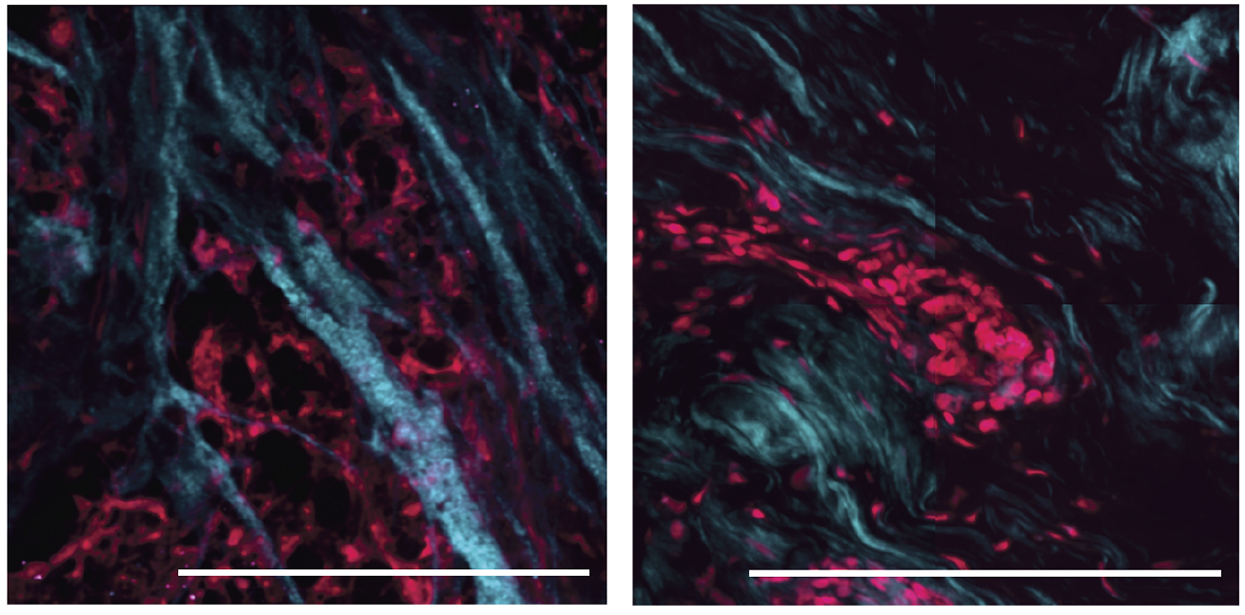BACKGROUNDPelvic organ prolapse (POP) involves pelvic organ herniation into the vagina due to pelvic floor tissue laxity, and vaginal structure is an essential factor. In POP, the vaginal walls exhibit abnormal collagen distribution and dec
Tag: Extracellular Matrix
Deer antler stem cell niche: An interesting perspective
In recent years, there has been considerable exploration into methods aimed at enhancing the regenerative capacity of transplanted and/or tissue-resident cells. Biomaterials, in particular, have garnered significant interest for their poten
High quality repair of osteochondral defects in rats using the extracellular matrix of antler stem cells
BACKGROUNDCartilage defects are some of the most common causes of arthritis. Cartilage lesions caused by inflammation, trauma or degenerative disease normally result in osteochondral defects. Previous studies have shown that decellularized
New Method Could Detect Early Ovarian Cancer from Urine Samples
Ovarian cancer is hard to diagnose in its early stages because it has vague symptoms, such as constipation, bloating, and back pain.
Why Ventilators can be Tough on Preemie Lungs
Many premature infants need mechanical ventilation to breathe. However, prolonged ventilation can lead to problems like respiratory diseases or ventilation-induced injury.Jonas Naumann and Mareike Zink study the physics of mechanical stress from ventilation at Leipzig University, in Leipzig, Germany and discovered some of the mechanisms that explain why premature lungs are especially sensitive to stress.
Artificially grown ‘mini-brains’ without animal components bring opportunities for neuroscience
Researchers at University of Michigan developed a method to produce artificially grown miniature brains — called human brain organoids — free of animal cells that could greatly improve the way neurodegenerative conditions are studied and, eventually, treated. The work offers a solution to overcome Matrigel’s weaknesses.
Researchers Find Age-related Differences in Lung Extracellular Matrix
Article title: Age-associated differences in the human lung extracellular matrix Authors: Maunick Lefin Koloko Ngassie, Maaike de Vries, Theo Borghuis, Wim Timens, Don D. Sin, David Nickle, Philippe Joubert, Peter Horvatovich, György Marko-Varga, Jacob J. Teske, Judith M. Vonk, Reinoud…
Researchers Identify Potential Target for Treating Autoimmune Diseases
New research using a mouse model for multiple sclerosis has uncovered a potential new area to explore for possible treatments for autoimmune disorders.
Researchers Explore Manipulation of Proteins as Way to Leverage Changes in Extracellular Matrix
Article title: PDIA3/ERp57 promotes a matrix-rich secretome that stimulates fibroblast adhesion through CCN2 Authors: Andrew L. Hellewell, Kate J. Heesom, Mark A. Jepson, Josephine C. Adams From the authors: “Thus, manipulation of PDIA3 or other relevant resident proteins within the…
Collagen Stiffness Plays Role in Asthma, Could Lead to Targeted Treatment
A new study finds that manipulating the stiffness of the collagen-based support structure of airway cells could lead to a new treatment for asthma. The study is published ahead of print in the Journal of Applied Physiology. It was chosen as an APSselect article for June.

Therapeutic resistance linked to softer tissue environment in breast cancer
Researchers at the University of California, San Francisco, have discovered that aggressive, triple-negative breast cancers (TNBCs) can evade treatment by reorganizing and softening the collagen matrix that surrounds the cancer cells. The study, which will be published April 2 in the Journal of Experimental Medicine (JEM), shows that the softer matrix activates a signaling pathway that promotes the cancer cells’ survival, and suggests that targeting this pathway could enhance the effectiveness of chemo- and radiotherapy in TNBC patients.
Agricultural Toxicity, Hepatic Effects of Phenobarbital, and More Featured in October 2020 Toxicological Sciences
Toxicological Sciences features leading research biotransformation, toxicokinetics, and pharmacokinetics; computational toxicology and databases; mixtures toxicology; and more in the October 2020 issue.